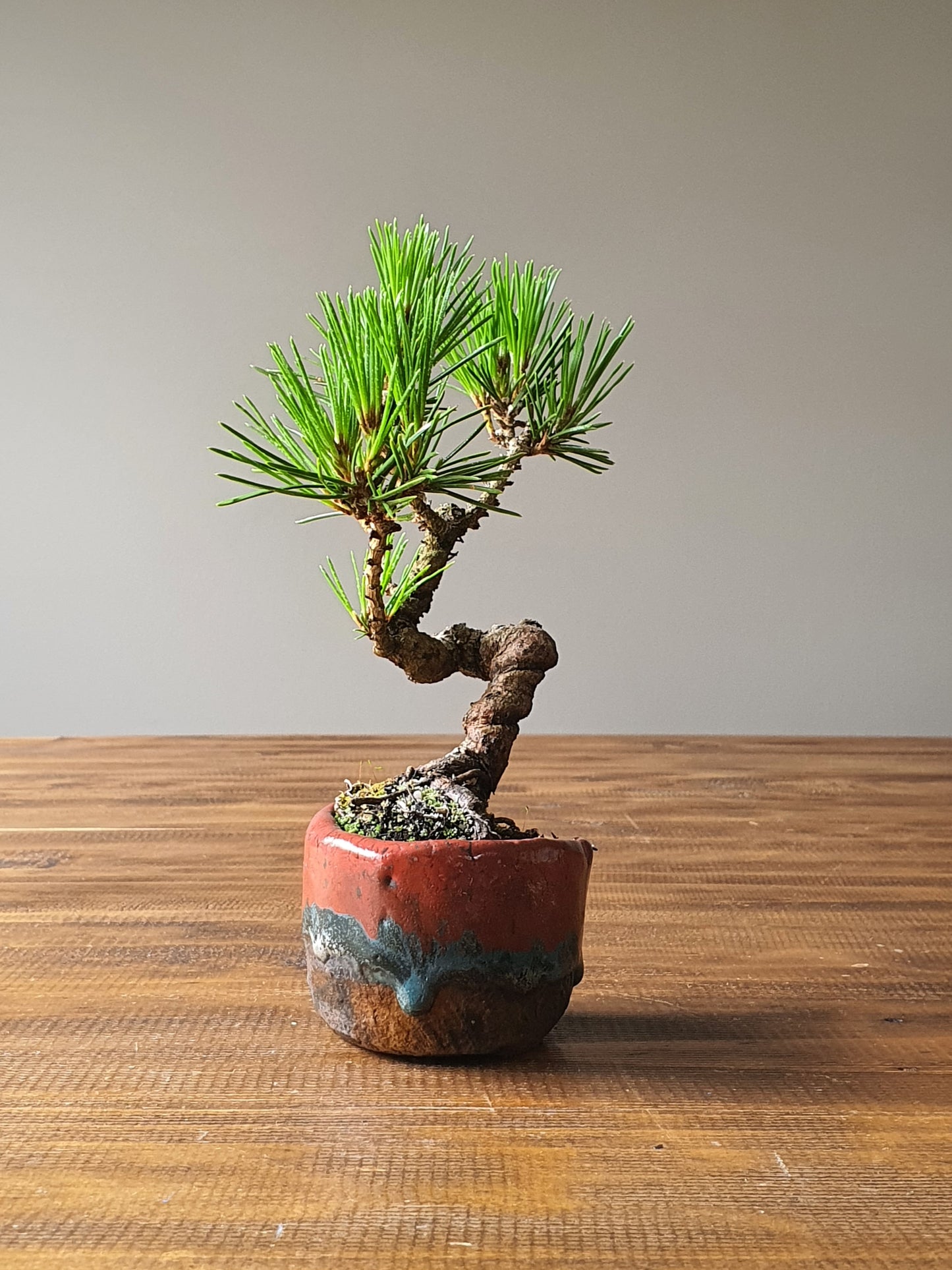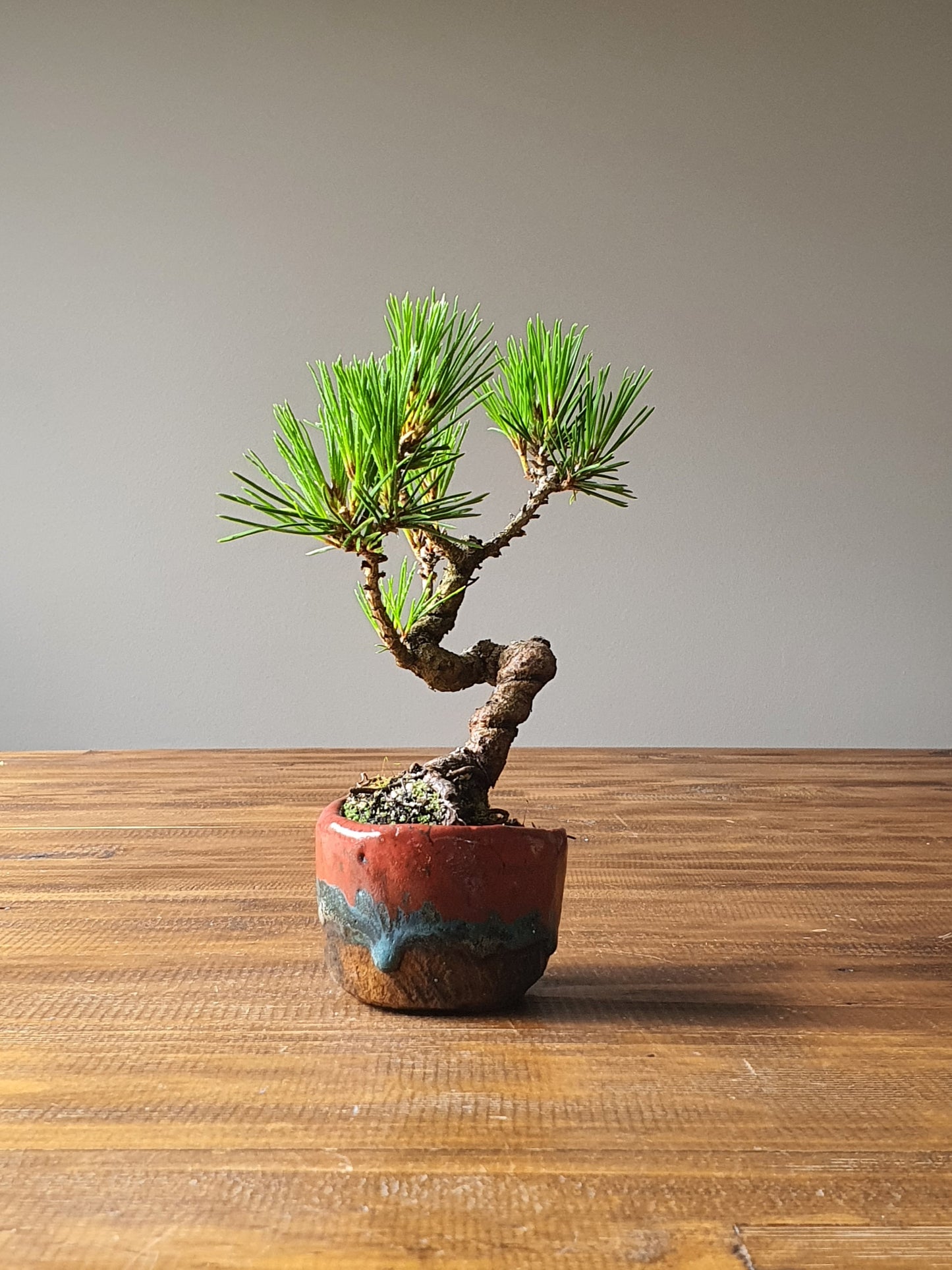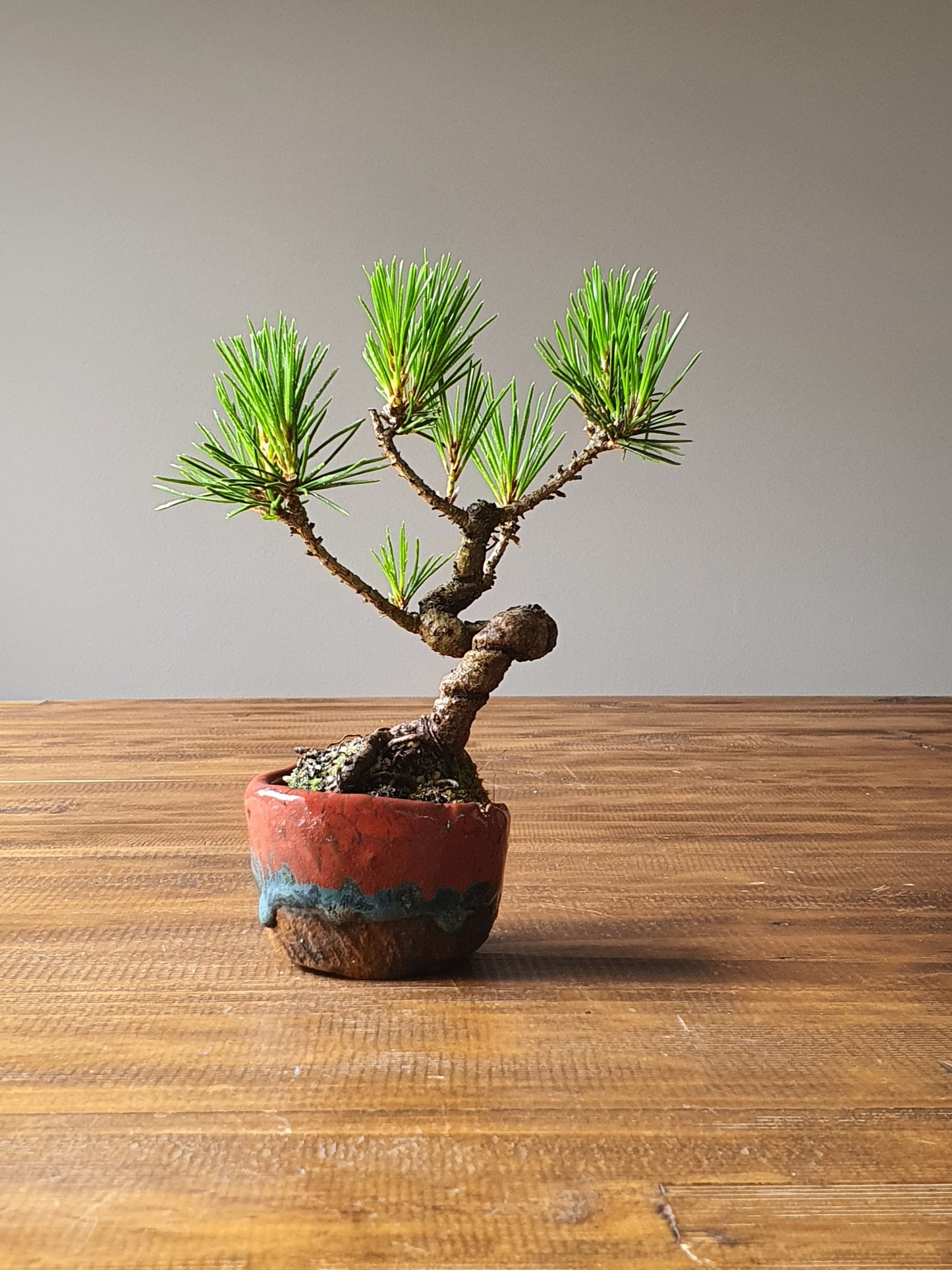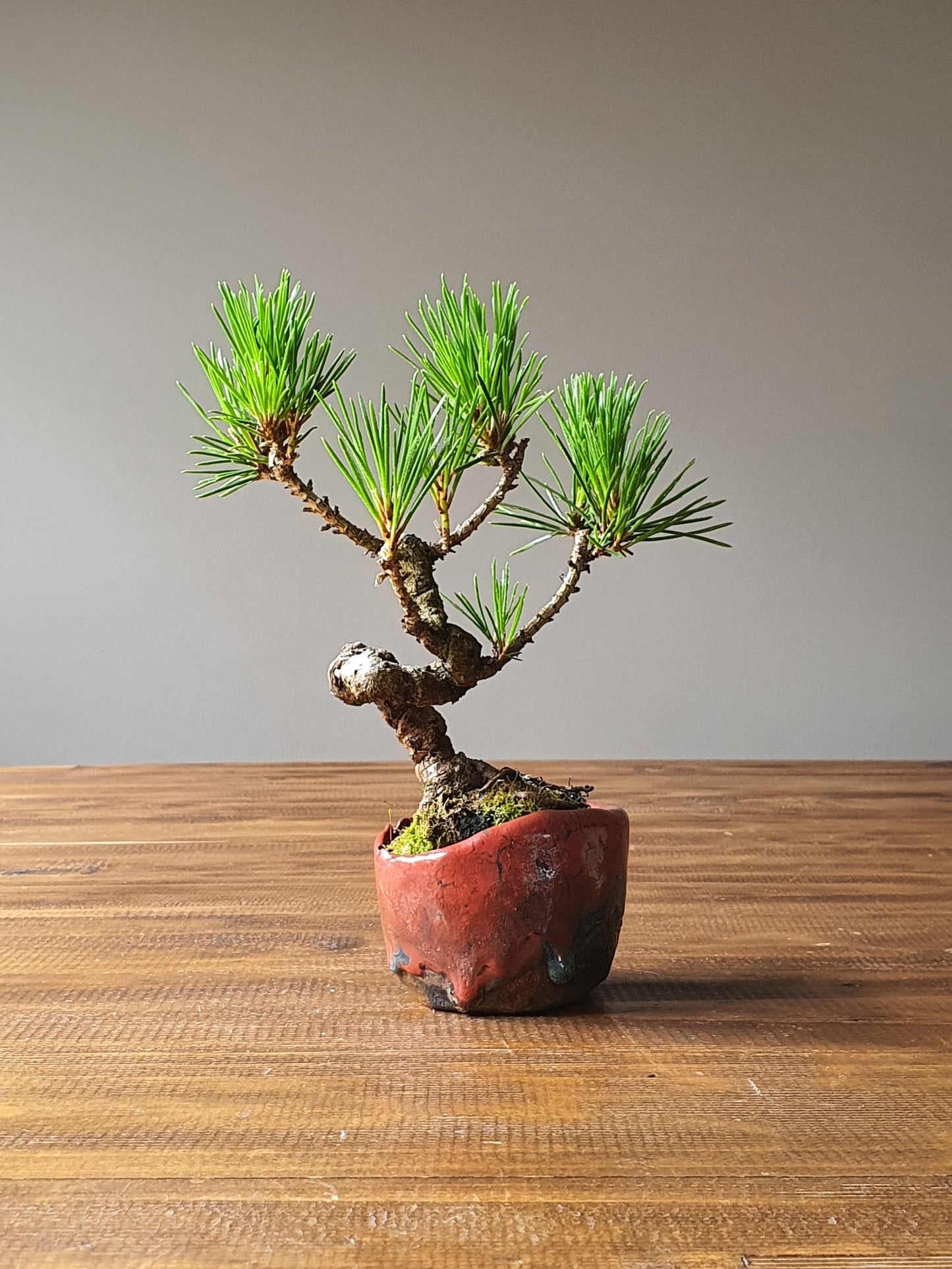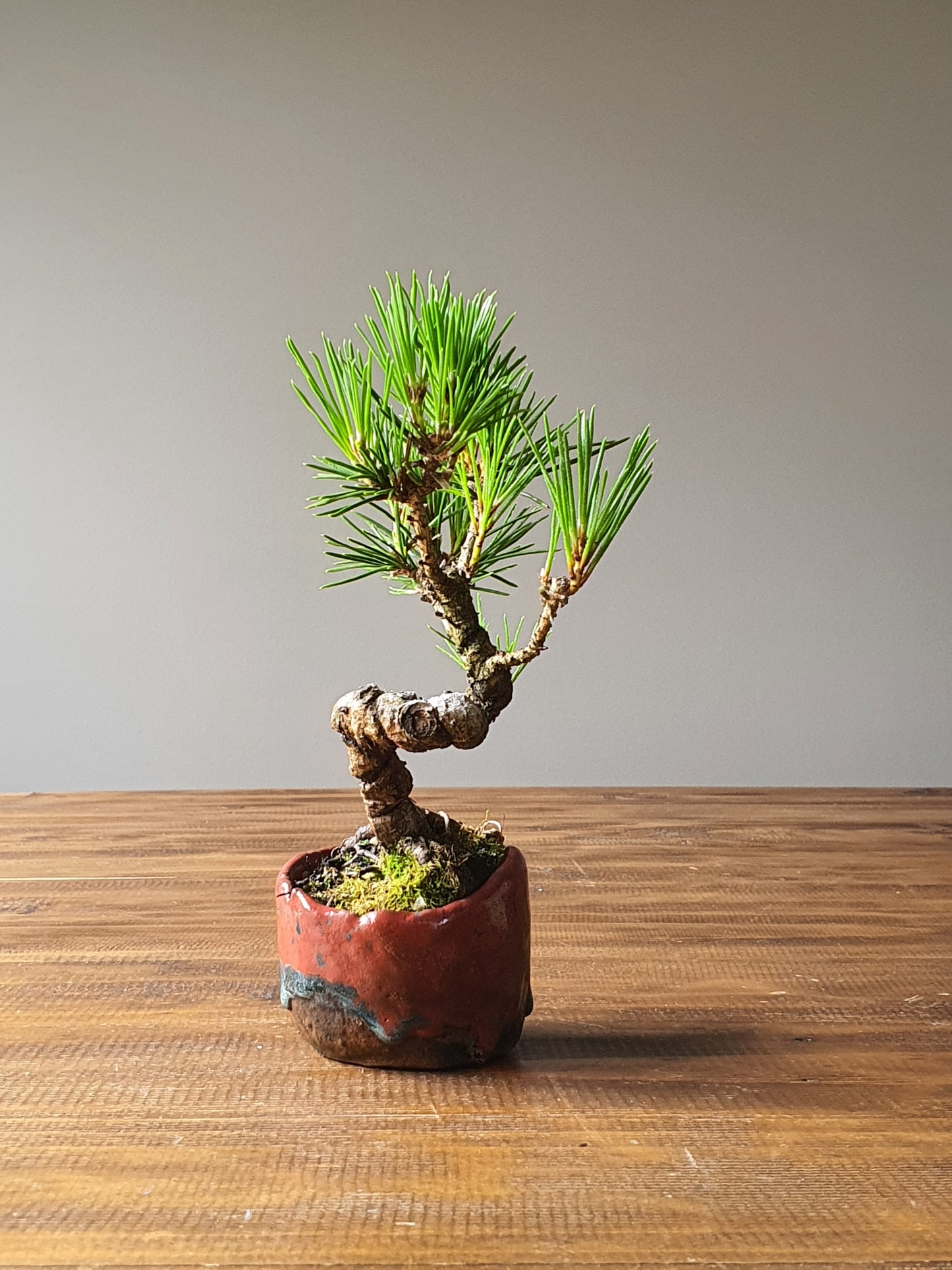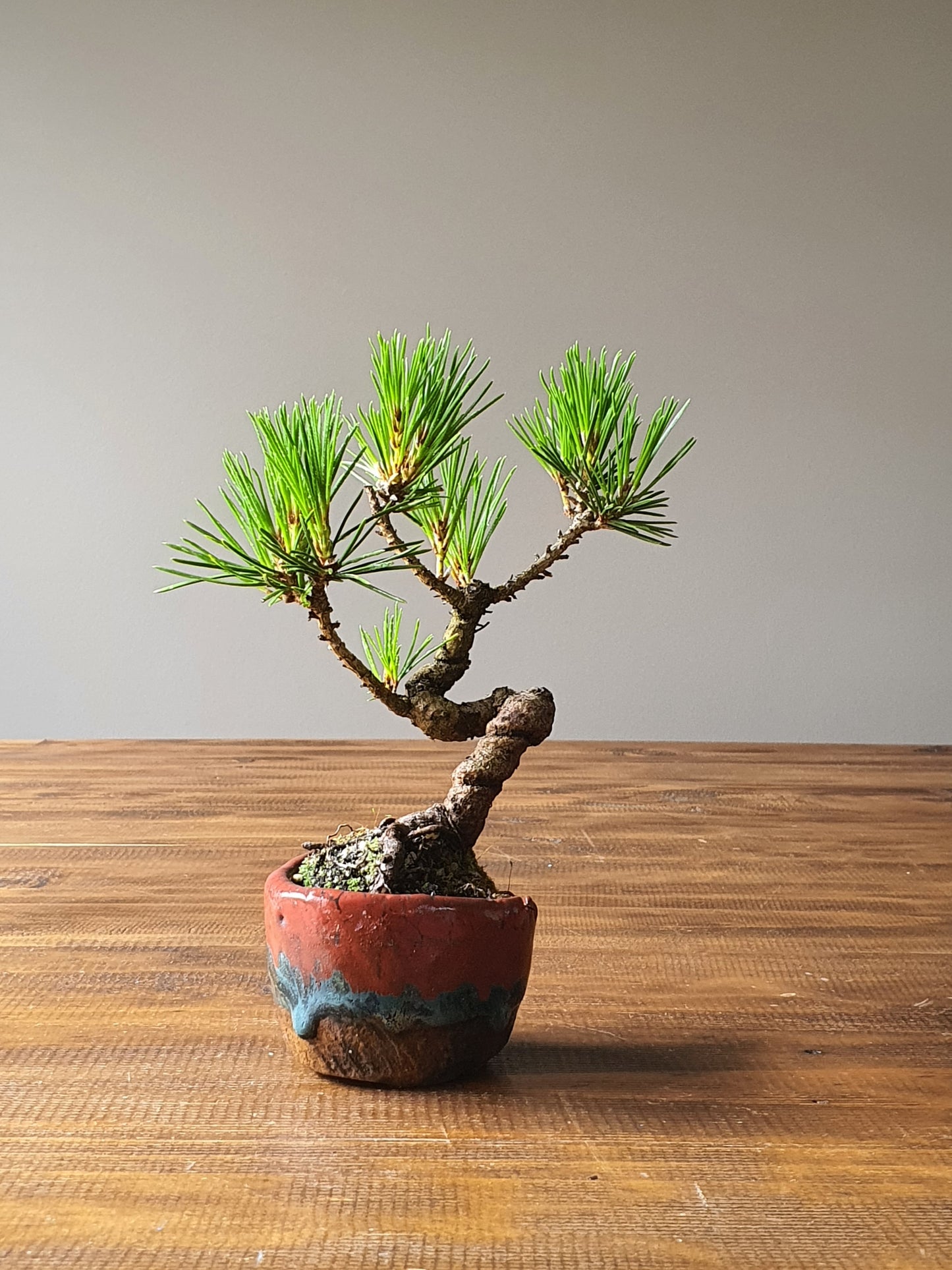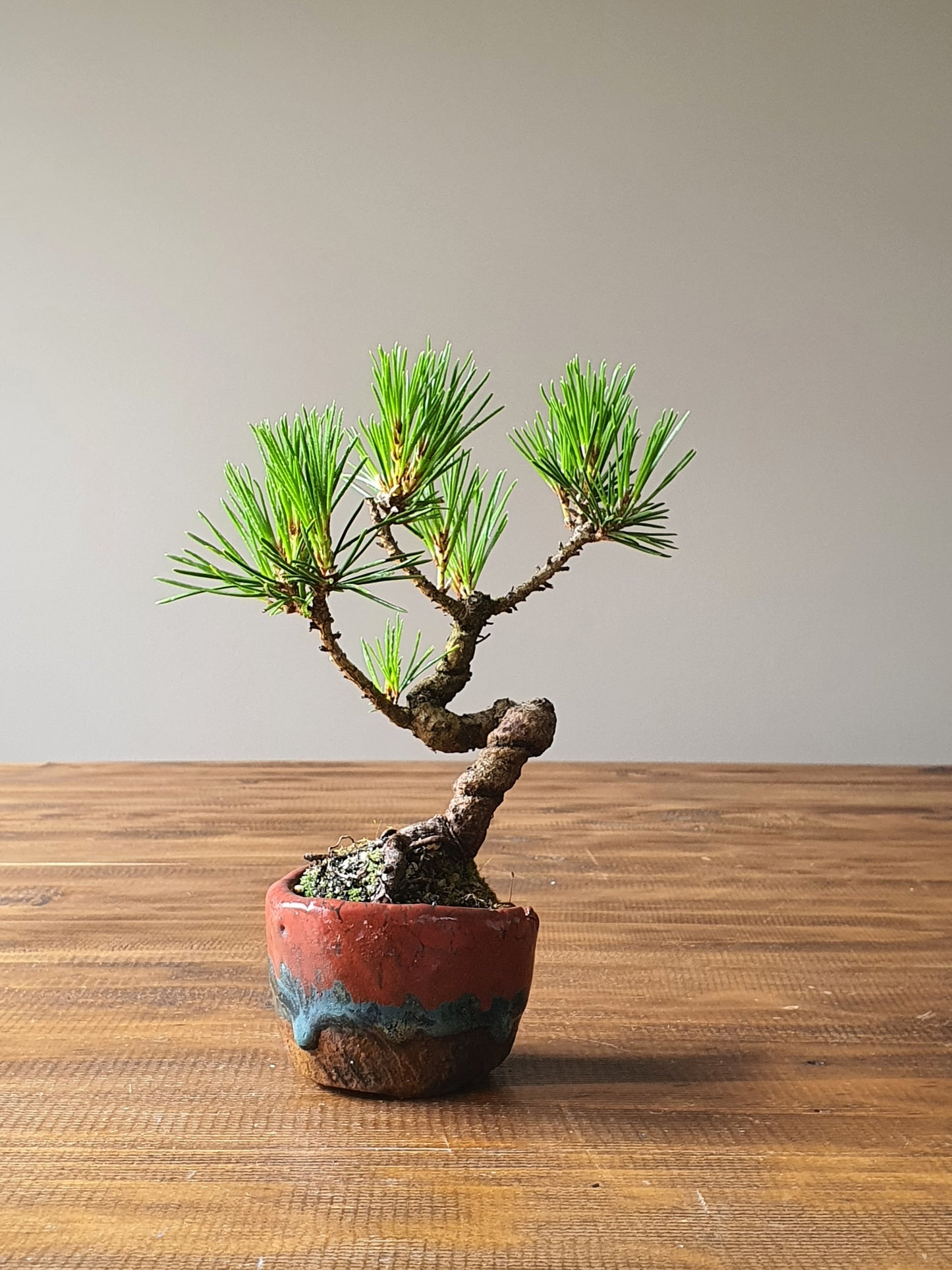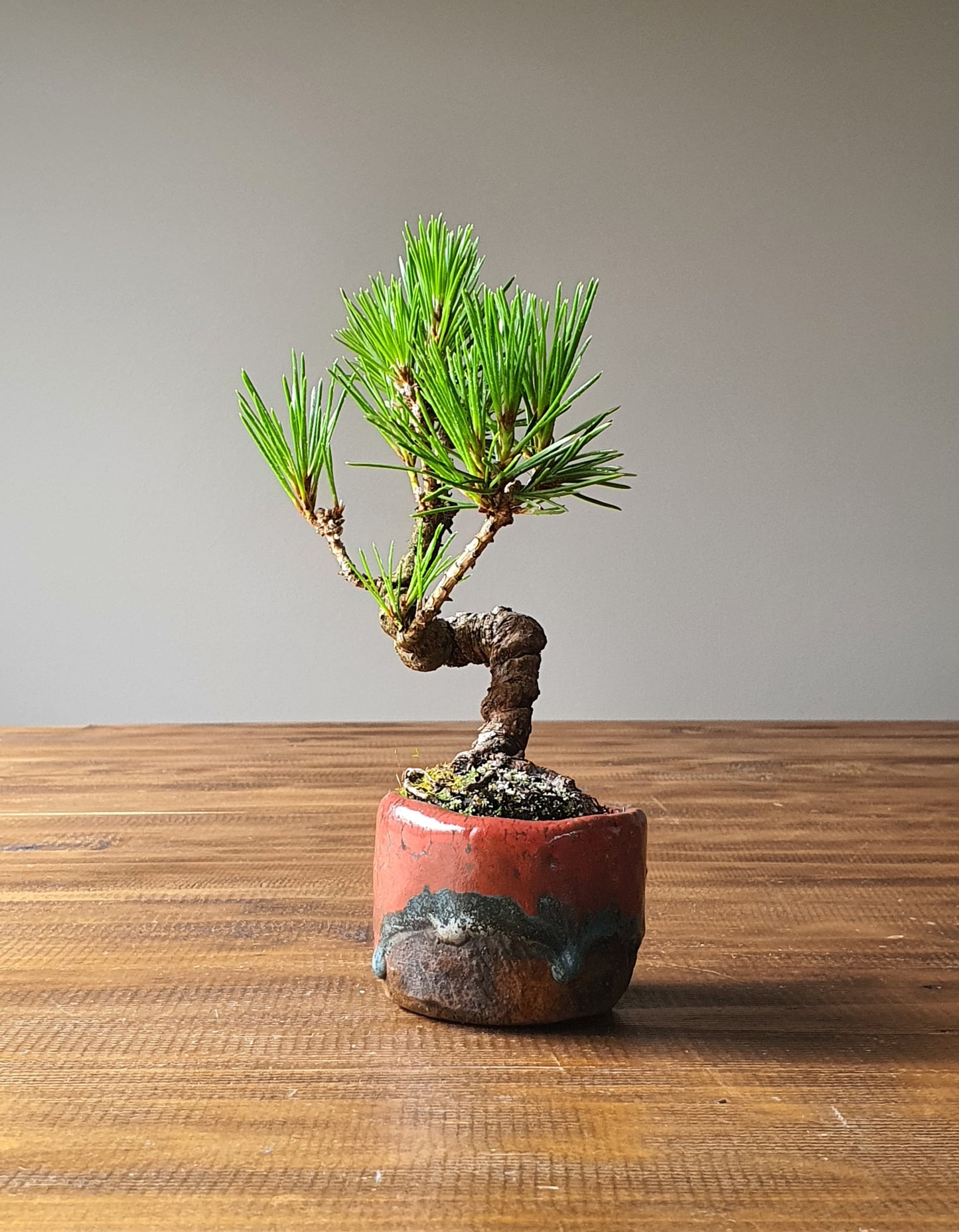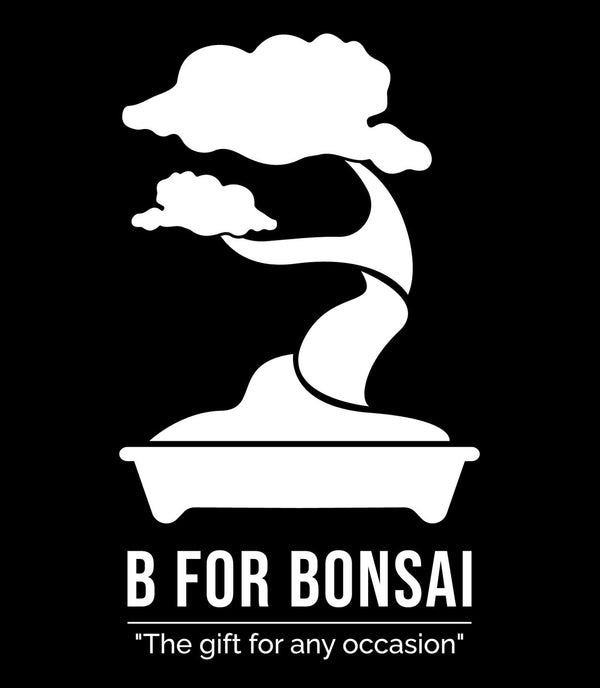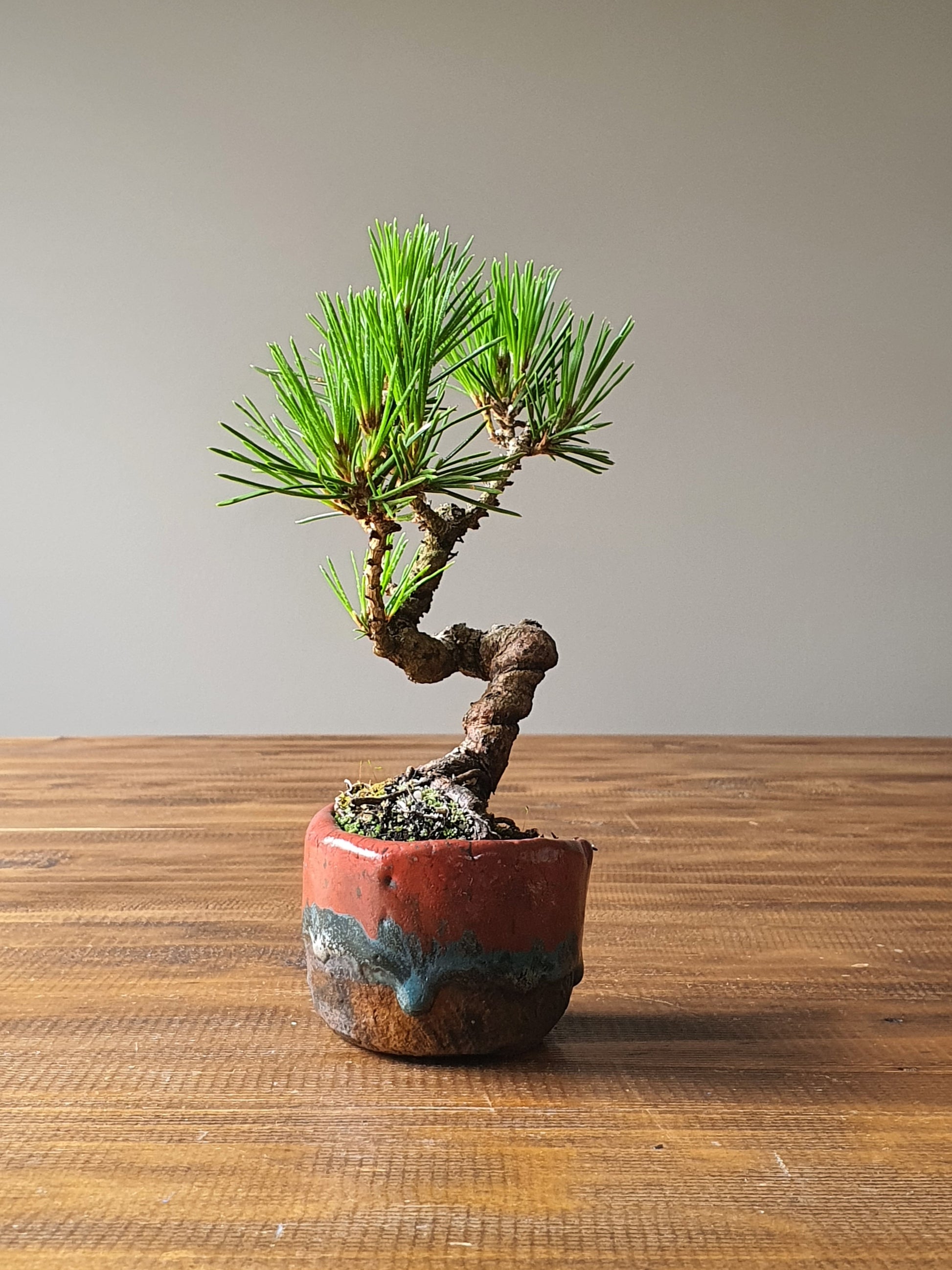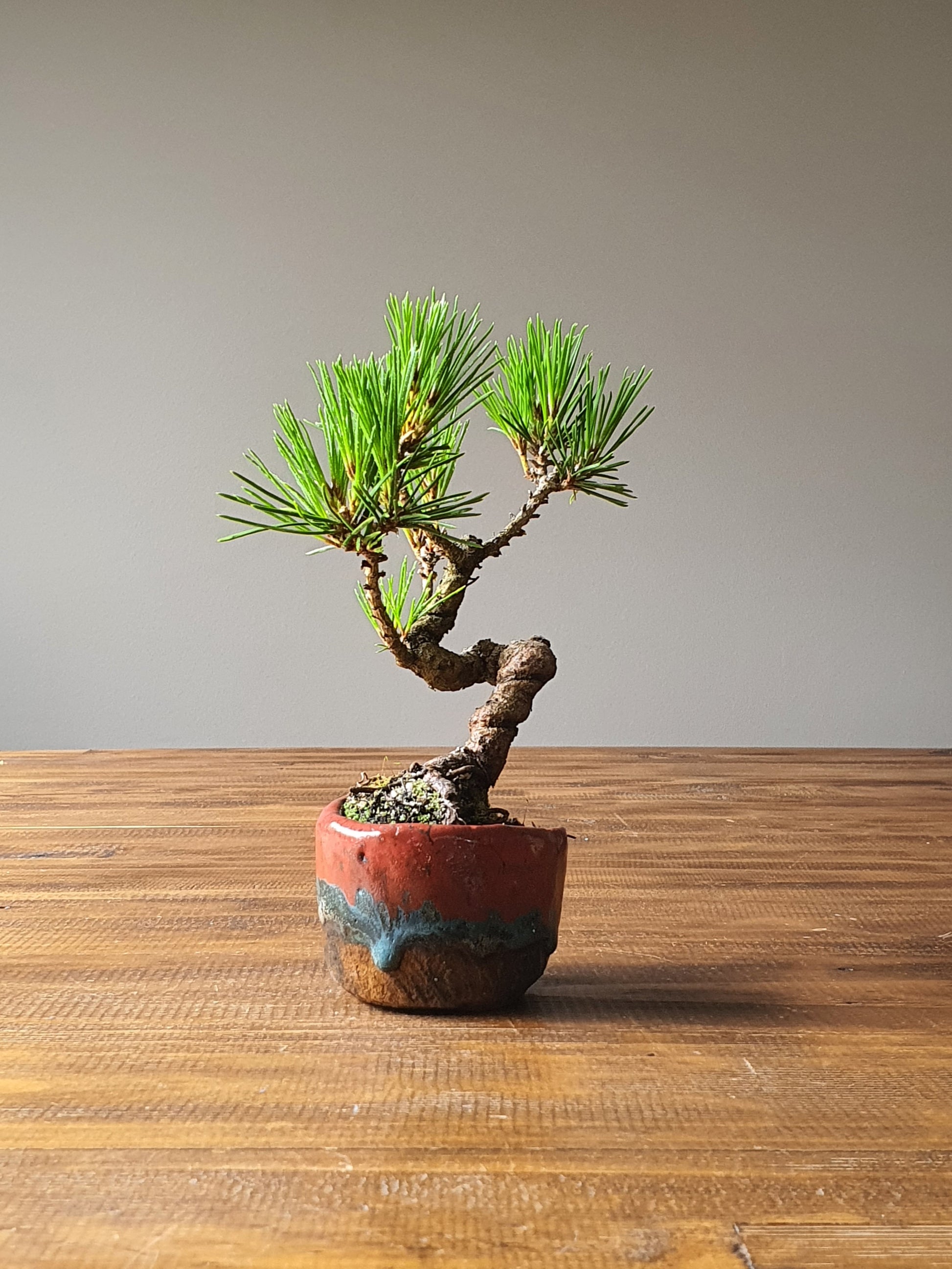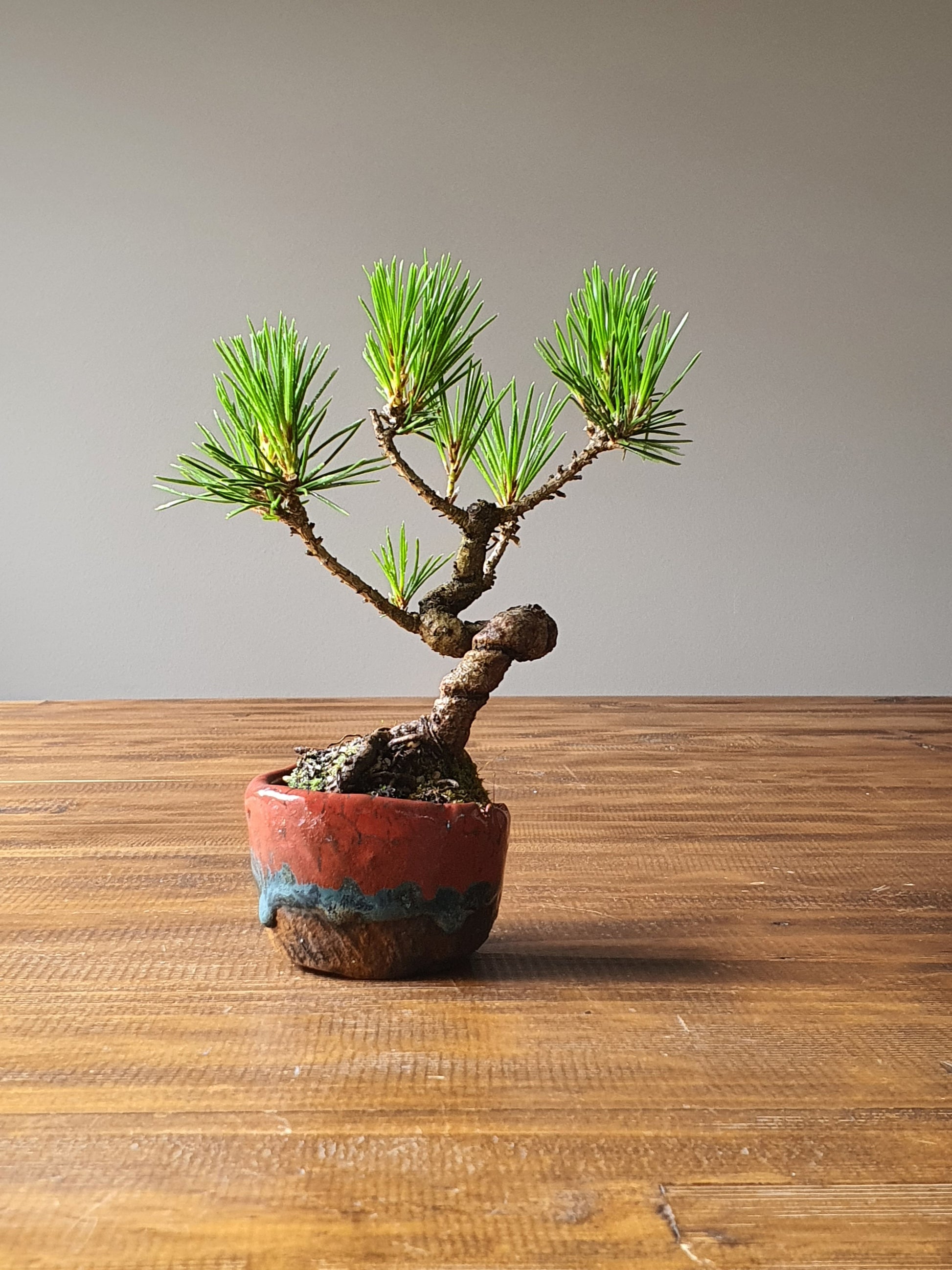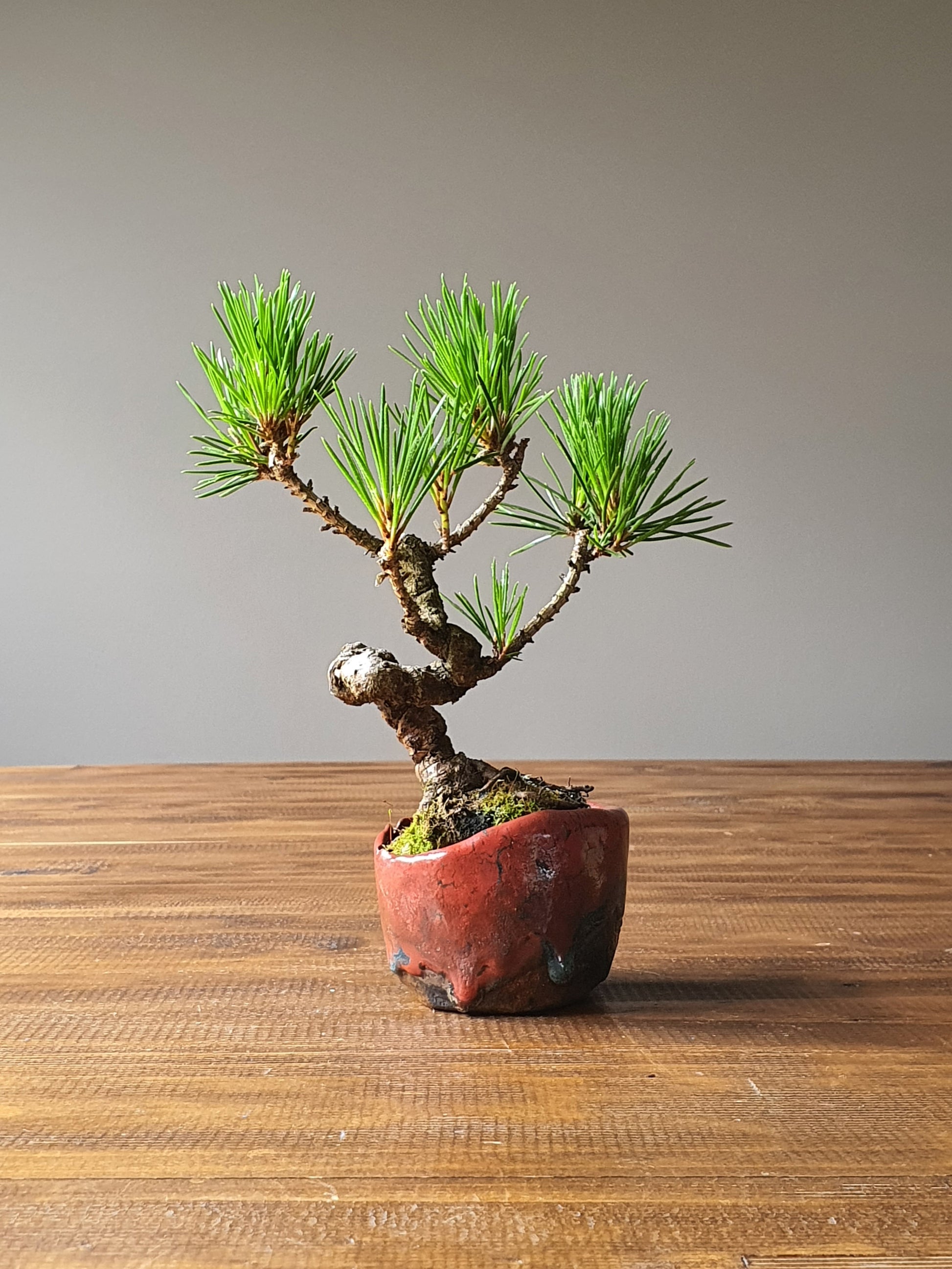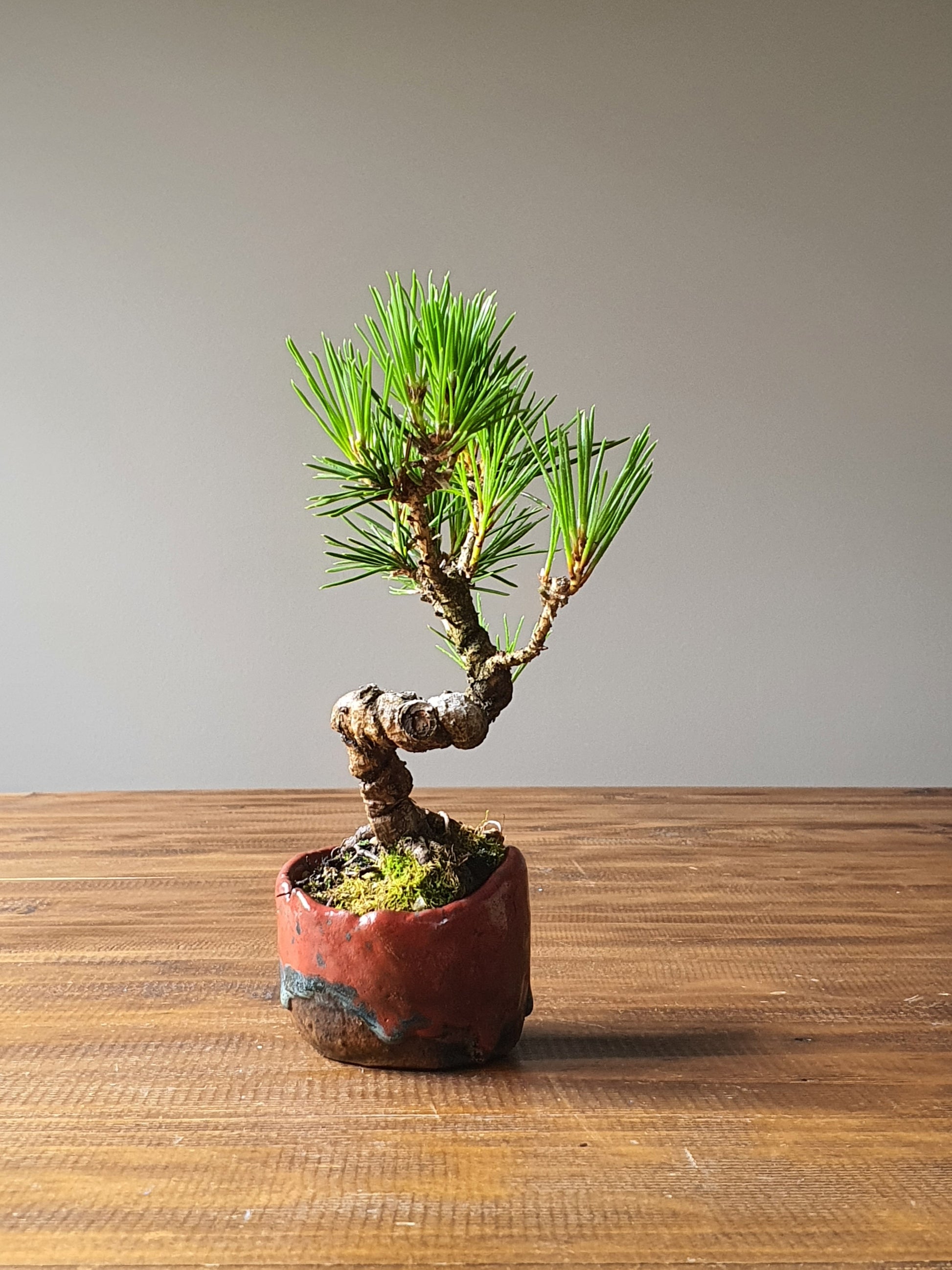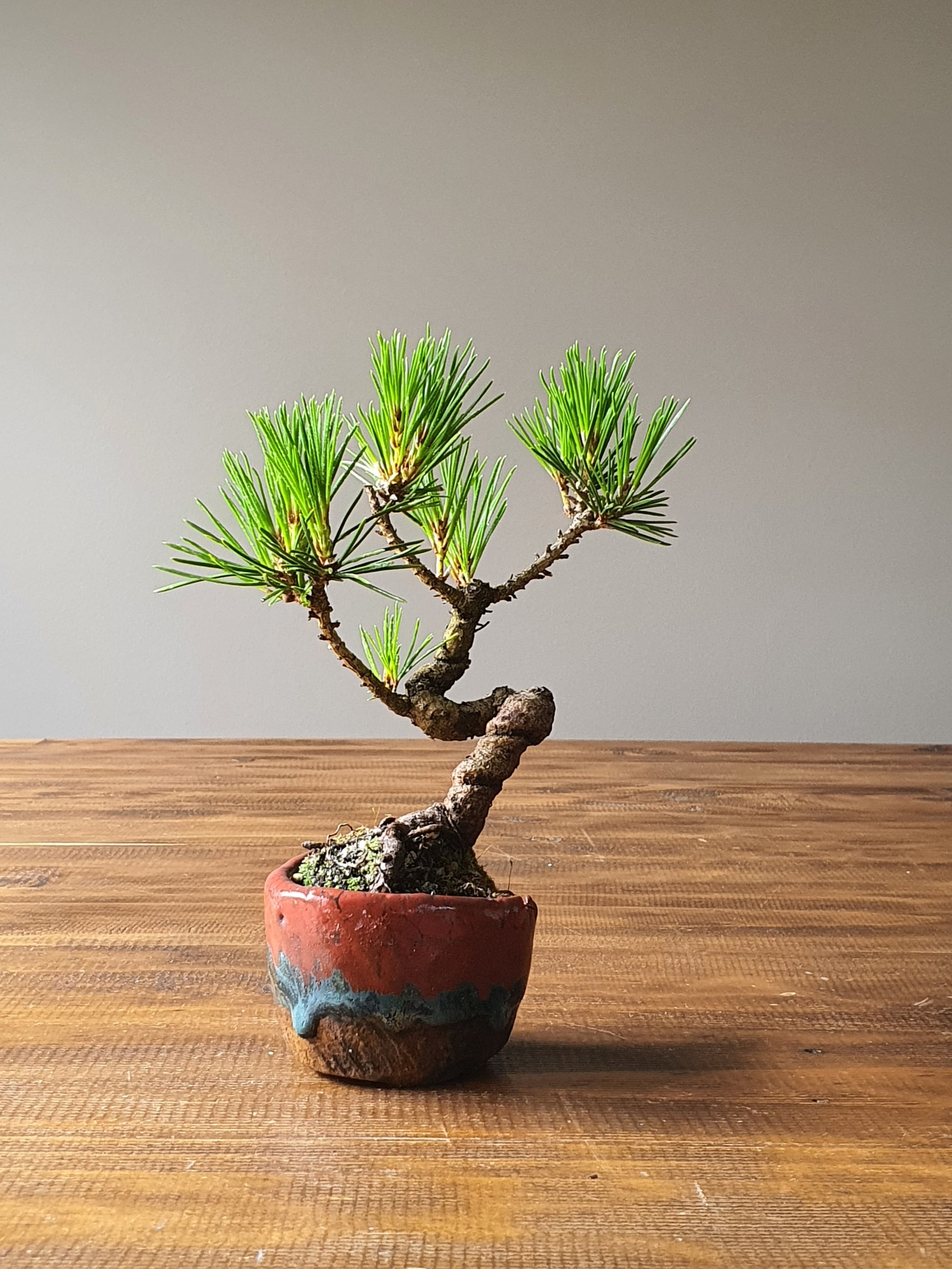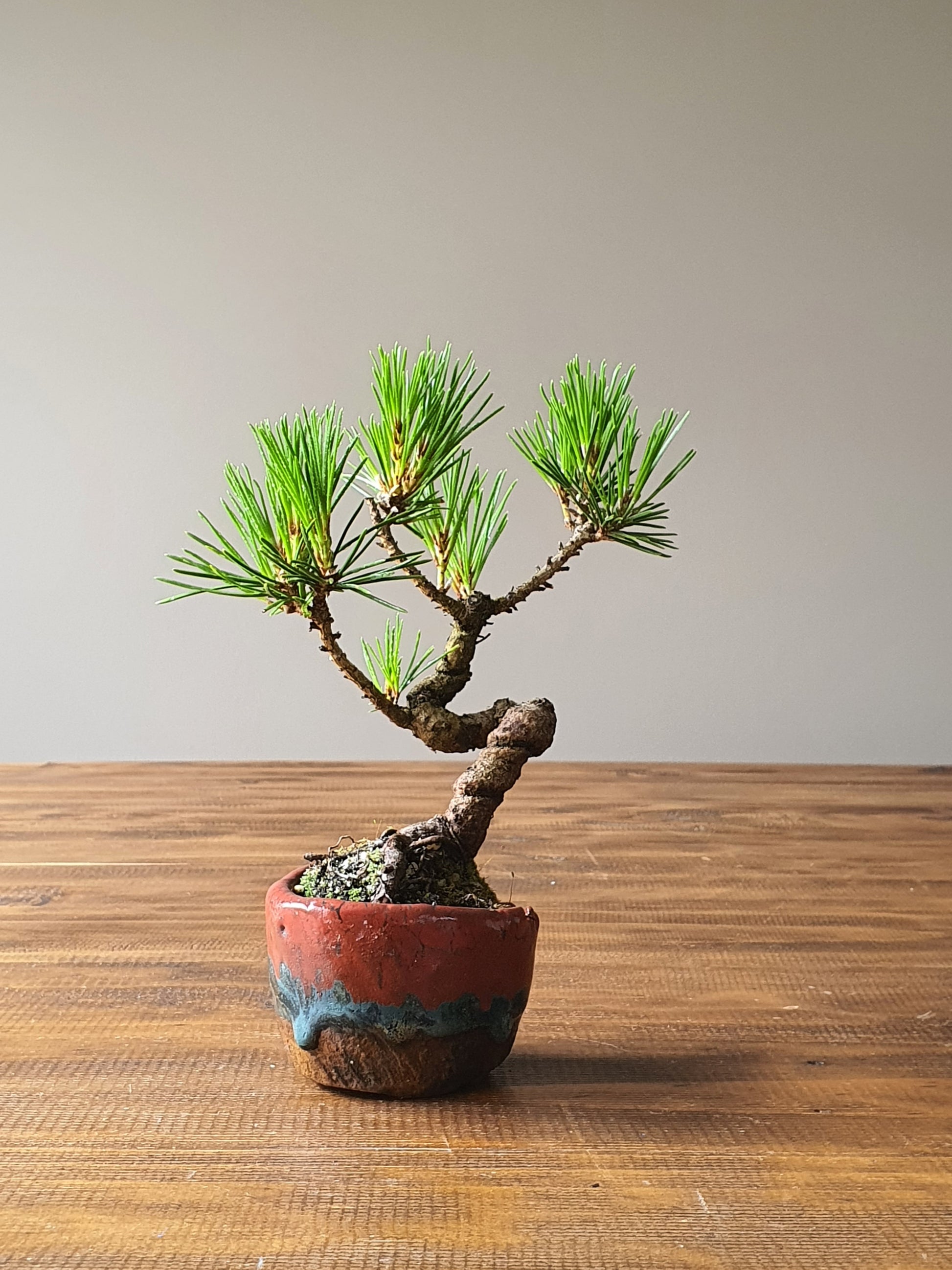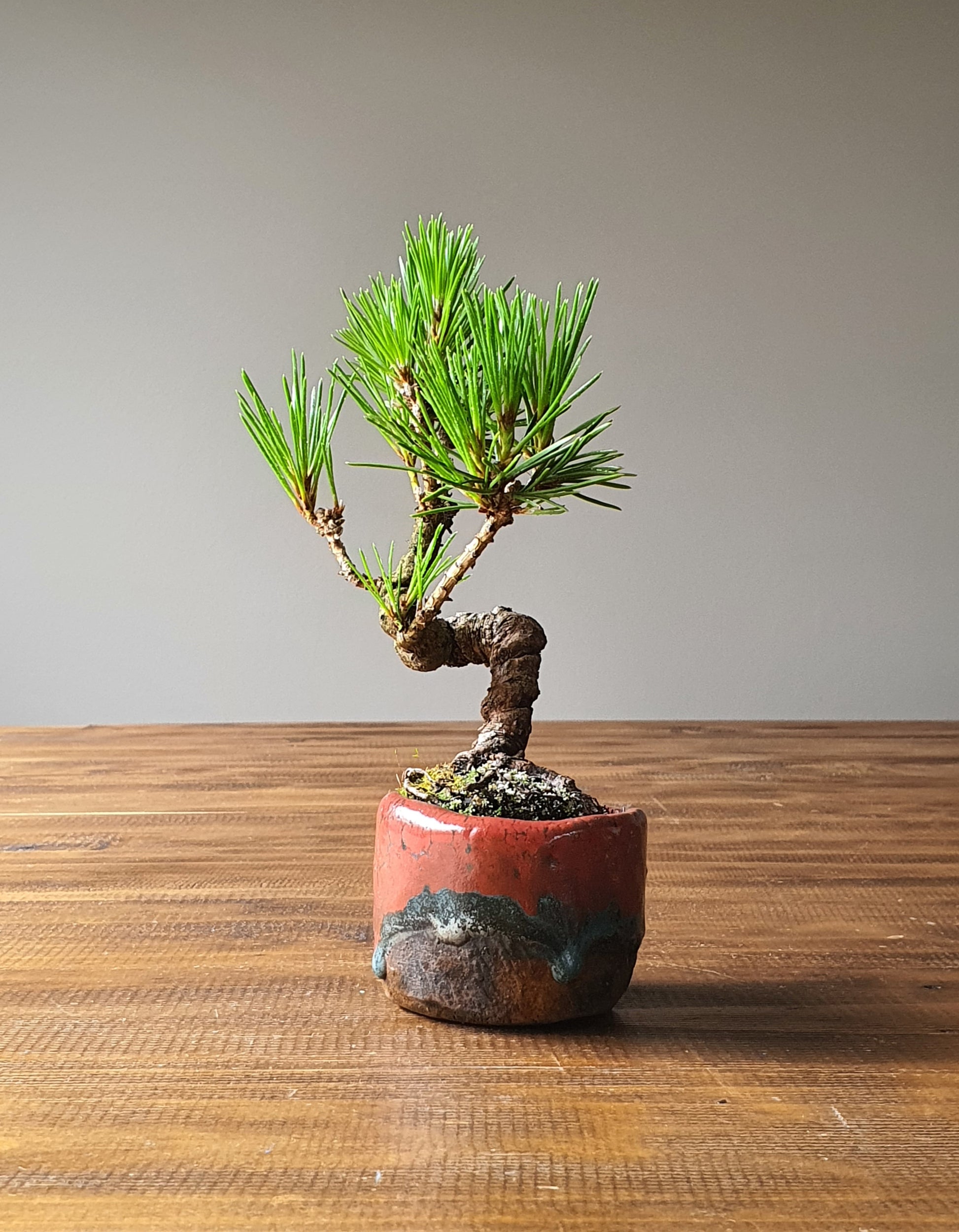My Store
Japanese Black Pine Bonsai (Mame) in handmade pot
Japanese Black Pine Bonsai (Mame) in handmade pot
Couldn't load pickup availability
Japanese black pine bonsai—Pinus thunbergii—is known as the king of bonsai and the most iconic conifer in bonsai practice - it is considered a classic worldwide. Japanese black pine’s aesthetic speaks to its longevity and durability. This conifer is a very powerful, aggressive, masculine approach to bonsai. The trunk movements along with the contrast of the aged bark and green foliage are proof of years of training. Capable of producing two flushes of growth in a single season, Japanese black pine is one of the most vigorous bonsai trees.
Sun Exposure and Watering
Avoid shading Japanese black pine bonsai - pines love full sun. This species responds best to full sun and a prolonged amount of sun exposure throughout the day. This exposure to the sun allows pines to maximize their capacity to produce tight, dense, compact growth and gives them the strength they need to thrive.
Just like Junipers, the Japanese black pine bonsai do not like to be kept wet and their soil should be thoroughly dried out between waterings. The trick is to not let their roots stay dry for a long period to avoid reducing the tree’s growth rate.
Although they don’t like being kept wet, they are a species that utilizes a large amount of water. So, when it comes time to water the tree, ensure the roots are thoroughly saturated.
Fertilizing and pruning
When decandling and seeking refinement of a Japanese black pine, timing is everything. Apply your last round of fertilization one month before decandling—starting in Spring if you are aspiring to get shorter internodes, and needles.
When pruning a Japanese black pine bonsai, it is best to start pruning when temperatures are slightly cooler because of the significant amount of sap this species produces when being pruned. During the cooler seasons, sap is not flowing, is denser, and in less of a floatable liquid state, allowing the tree to patch any wounds before too much sap is lost.
Pines will produce a lot of needle growth and will elongate quickly when fertilized aggressively during development.
With moderate fertilization, pine bonsai tree will produce a fair amount of growth.
The best time to structurally style or remove branches from a pine bonsai is in the early Spring, prior to the onset of new growth, or the early Autumn.
For refinement, pine should be pruned right after its first flush hardens. This allows for a much more manageable and controllable push of growth.
Letting the Spring flush growth exist on your pine will encourage more aggressive growth.
About Erin Pottery
Erin Pottery creates high quality hand-made bonsai and accent pots made for enthusiasts by Glyn and Vic Harris, a father and son team. Erin pottery has been selling bonsai pots professionally for over 20 years. All pots are hand-made and are individually glazed, so that every pot is unique. Firing temperatures are from 1260 – 1300°C, so that each pot is completely non porous, totally frost proof and extremely durable. Their hand-made pots will always bring out the best in any tree or plant.
Photo: 11 Jan 24
Height: 22cm from the bottom of the pot.
Share
